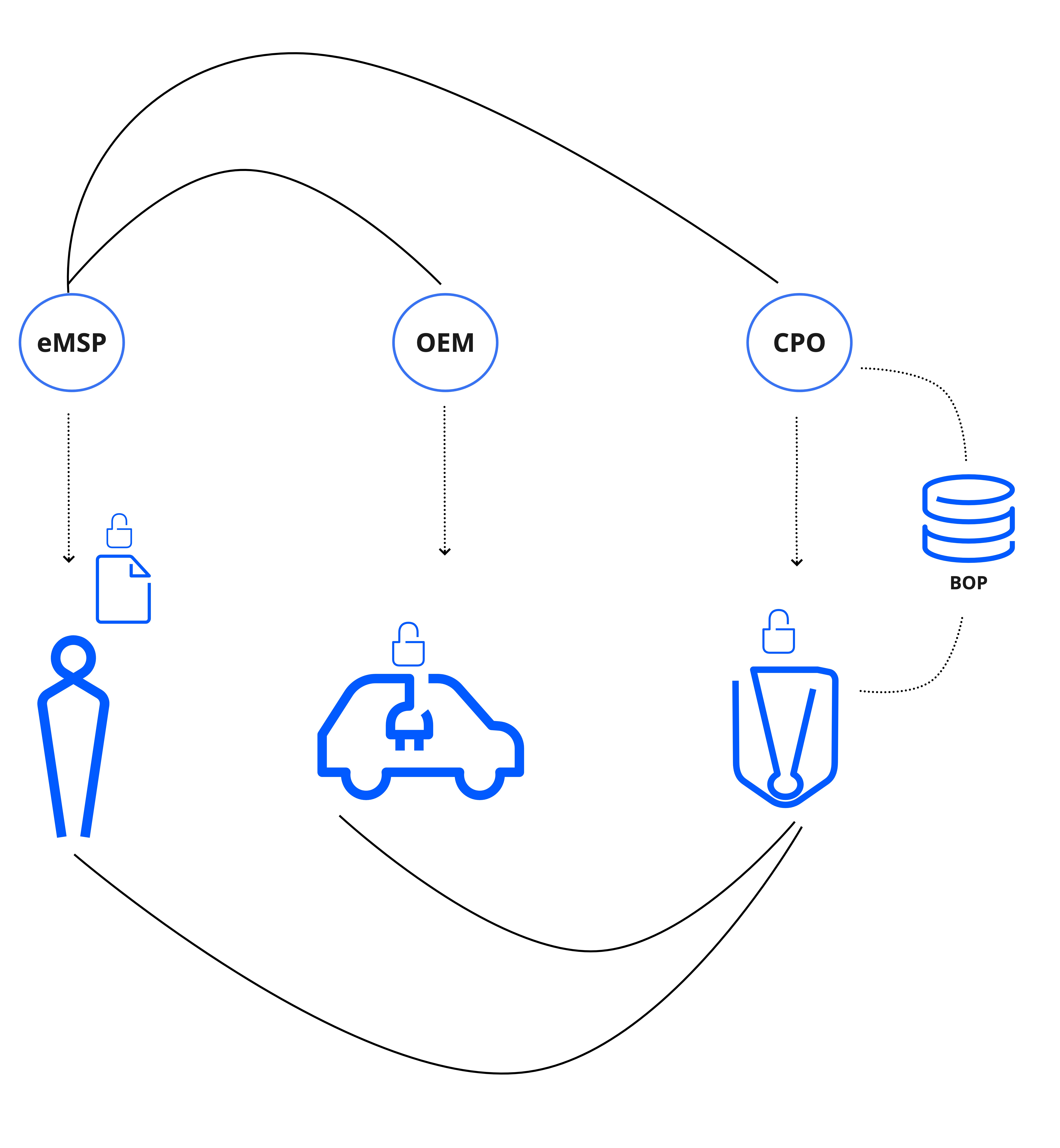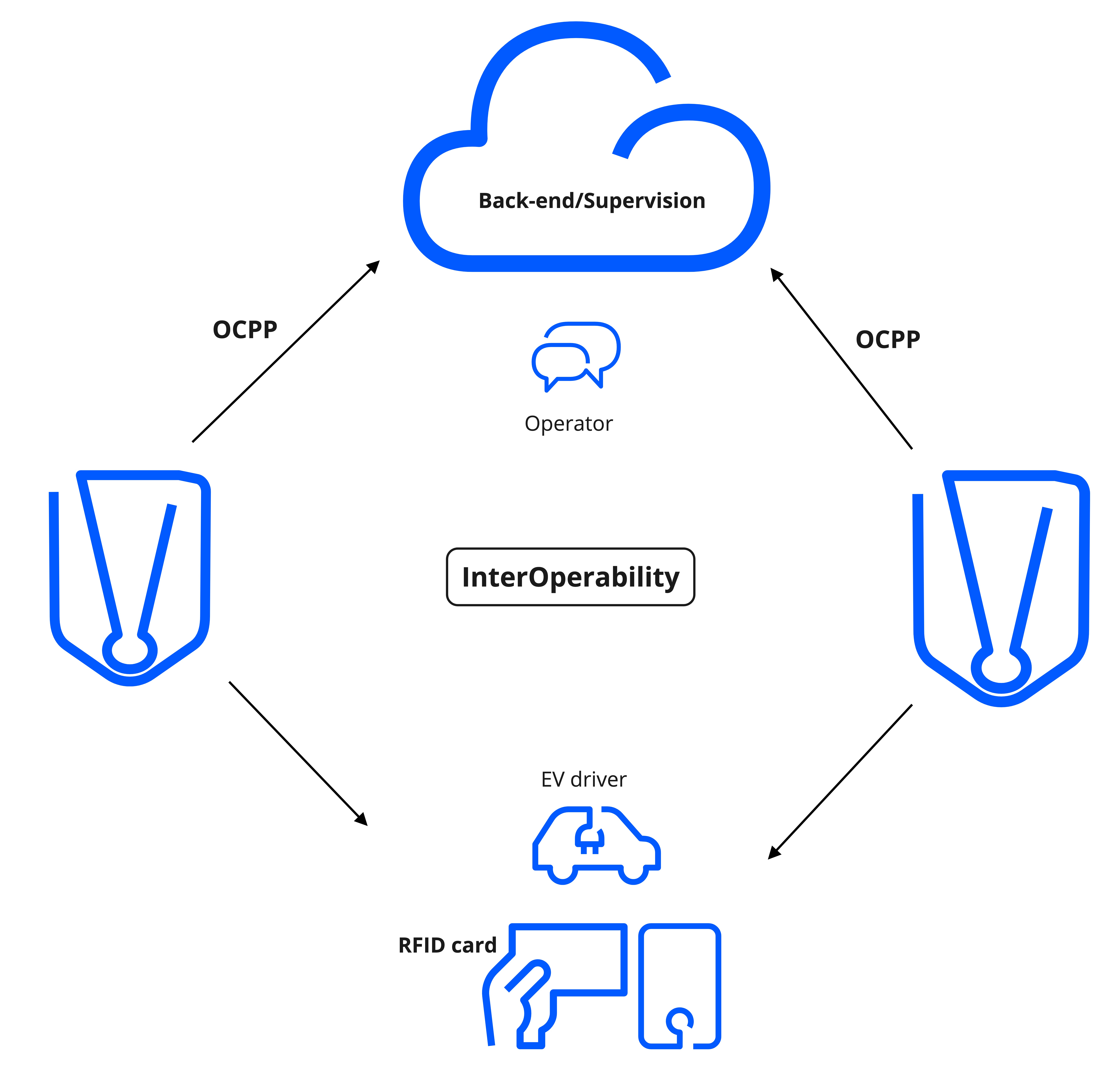Introduction
Cloud OCPP is hosted in the cloud, making our service flexible and adaptable to a wide range of use cases.
Overview
The Open Charge Point Protocol (OCPP) implementation is based on OCPP 1.6 2nd Ed from OpenChargeAlliance. All date and timestamps provided by the OCPP layer will be compliant with the ISO8606 standard and be UTC time. This communication standard for EV charging stations and network software companies is designed to be free, open-source, and easy to implement to ensure all participants are speaking the same language. As a result, OCPP has become the global benchmark for interoperability between open EV chargers and charging station management systems (CSMS). In simple words, OCPP helps a charging station (EVSE) communicate with its central system.

Why OCPP
As the world **enters the era of the internet of things (IoT), EV charging becomes more and more the norm and it’s expected that this growth will continue in the future. To stay adapted to the evolving needs of the EV community for years, the infrastructure we build today must be able to grow and flex.
Generally, OCPP is known as the standard for Interoperability in the EV charging industry. With this interoperability, customers can choose any configuration that fits their needs best. Plus, it allows them to change their configuration at any time – no worries about vendor lock-in or stranded assets, or external changes such as technology developments, markets, and societal habits.Charging point infrastructure could become outdated in the years to come and leave the business owners with losses. The Compatibility OCPP brings could enable many different manufacturers who will be offering their type of backend systems and their type of EV charging systems to speak the same language, meaning that they are technically capable of exchanging energy. When you choose an OCPP-compliant charging solution, you can change your network whenever you want. The Flexibility of the OCPP-compliant charging solution allows you to change your network whenever you want, preventing you from being stuck with one hardware/software and paying network fees. If any charging stations and manufacturer goes out of business, you are Secure to switch service provider. Features like real-time and remote control of charging points, energy management by load balancing, authentication and access control are only a few examples of the Smart options available in OCPP.

Simply put, any EV charging station that is OCPP-compliant can be configured to run any similarly OCPP-compliant software.
Difference between being an Operator and Service Provider
CPO (charge point operator) is a company that monetises and maintains the charging stations’ infrastructure from the cloud. The operator provides enterprise customers with a cloud-based, scalable and high-performing solution that can help them build or migrate their EV charging network. E-mobility service providers (EMSP) itself can be slightly confusing to some as it is an umbrella term for charge point installers, energy suppliers, energy utilities, fleet managers and manufacturers. The businesses that intend to manage energy in an efficient way and enable a robust charging network are dependent on CPOs to deliver charging services to EV drivers.
EMSPs and CPOsare two crucial and interdependent elements of a charging network. While the CPO manages, install ,and sets up the charging infrastructure and maintains the charging stations, EMSP offers the charging services and infrastructure directly to EV drivers such as managing the payments and billing, charging sessions, finding charging stations, and offering a frictionless charging experience.
It’s important to note that nothing prevents an EMSP from also taking on the CPO role and vice versa.

Difference between Operator and back-office
The CPOs main task, as included in the name, is to operate the charging infrastructure commonly via the usage of a backend. Charging stations have specific gateways to communicate with back-office known as external central systems. An EV charging back-office is a cloud-based software that is the backbone of every successful charging system and essential to the acceleration of EV infrastructure. For example, X is a hardware-agnostic OCPP back-office provider (BOP) that Y as a CPO uses. X offers Y and its customers up to real-time data on the charging stations. In Easee, the operator is listed as X in the dropdown list in the Easee Portal. however, Y is not visible in this list since it is a back-office.

CPOs might use either their App or web portal to control charging stations throughout the back-office they are using. Basically, BOP can integrate almost any charging station into their OCPP backend and connects all of the key players in the electric vehicle ecosystem while providing services for the entire value chain.

OCPP integration with Easee
If you are a vendor of EV charging stations and central management systems and wish to control the chargers via OCPP, please find the relevant information here.
Ready to integrate
If you wish to learn more details about how the setup and management of charging stations through OCPP works, please continue reading some use cases.
Updated 9 months ago
